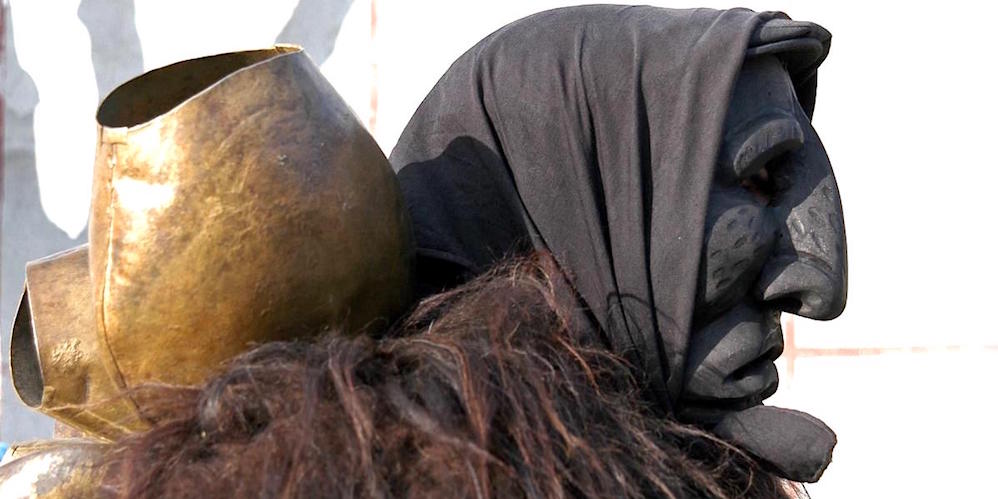From man to beast
Even a candidate as stubborn as winter himself must get cold feet at the sight of a Mamuthone (header image) – not to speak of an entranced hoard of them foot-stamping and cow-bell-rattling on streets around the many bonfires lit for the grave occasion. The noise is deafening and the atmosphere perturbing. The aim of this ancestral rite is to scare winter and evil spirits away with all the might one can muster. Thus, room is made for spring and to welcome the good it promises to bring. In order for nature not to oversleep, the tradition of stamping and rattling, by employing full weight of body and bells, is a forceful means of reliably shaking her out of hibernation and to remind her: Now is the time for renewal! Measures that seem to have worked over the ages.
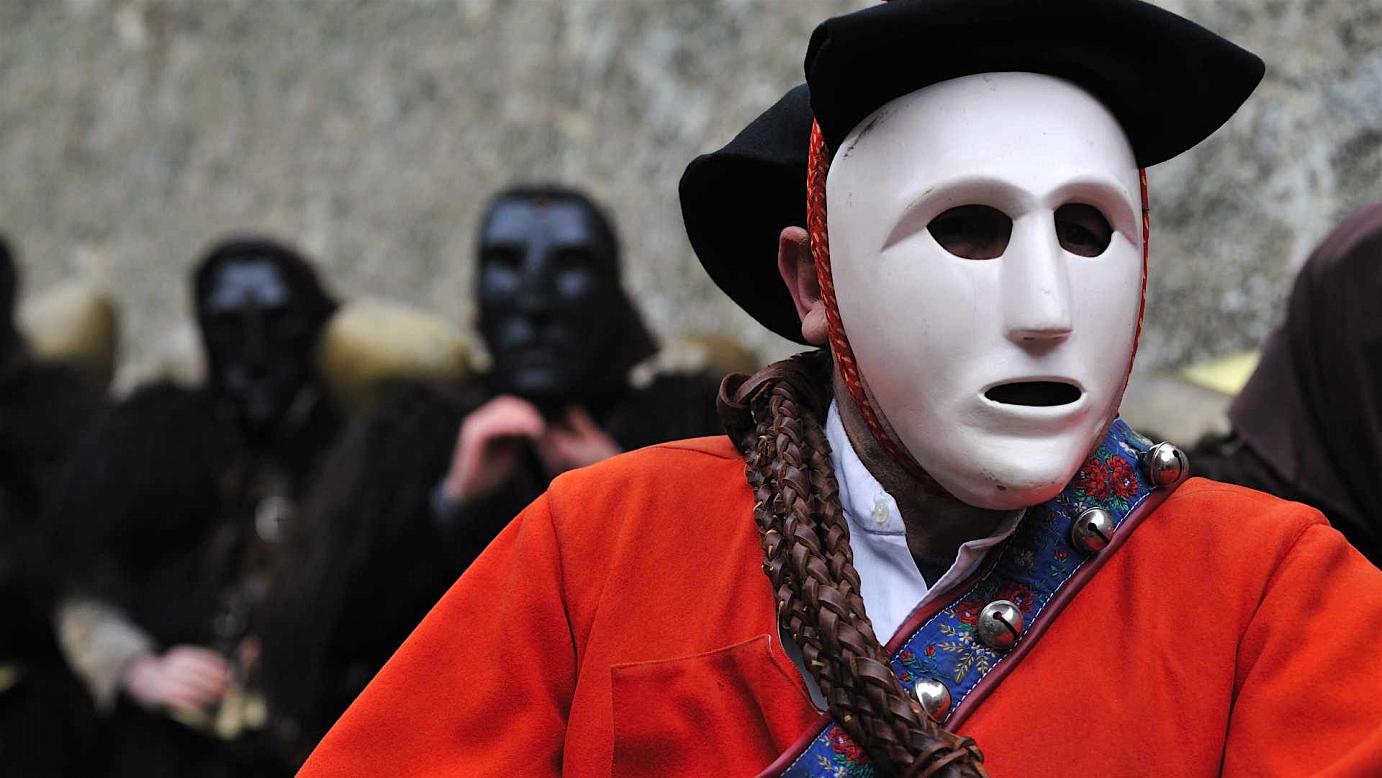
An Issohadore on the streets of Mamoiada. Photo credit: Maddanu M.. License: CC BY-NC-SA.
The “good” white-masked Issohadores are playing the soothing counterpart to the “bad” Mamuthones. By snapping and whipping their soha – a rope – they aim to round up and catch their „prey“. It is mainly young women they are singling out: Their youth is regarded as the epitome of fertility and the beginning of a new circle of life.
‘Mascherarsi è un destino’ – To disguise oneself is a destiny
For the Mamoiadinos, this is not simply Carnival in its classical sense. By them it is rather seen as a metamorphosis from man to beast. A duty towards culture and tradition, a destiny a real man has to shoulder.
The timings are similar to Carnival: The feast is triggered off on each 17th of January in honour of Sant’Antonio and to plead for health and good fate. On the Sunday before Mardi Gras activities pick up again – to culminate on Mardi Gras itself.
Ruggero Mameli, the mask-maker
People are coming from all over the world to witness the spectacle of Mamoiada and to buy his masks, says Ruggero Mameli, who was still un bambino when his passion for masks was aroused. Once a private owner showed him one more than 200 years old. What a rare treasure! Back in time, everyone used to make their own masks, Ruggero explains, so they carried many different features. Nowadays, they are more or less standard-looking, following a simple pattern: one is ugly and coloured black (embodying the bad), the other one is beautiful and painted white (symbolising the good).
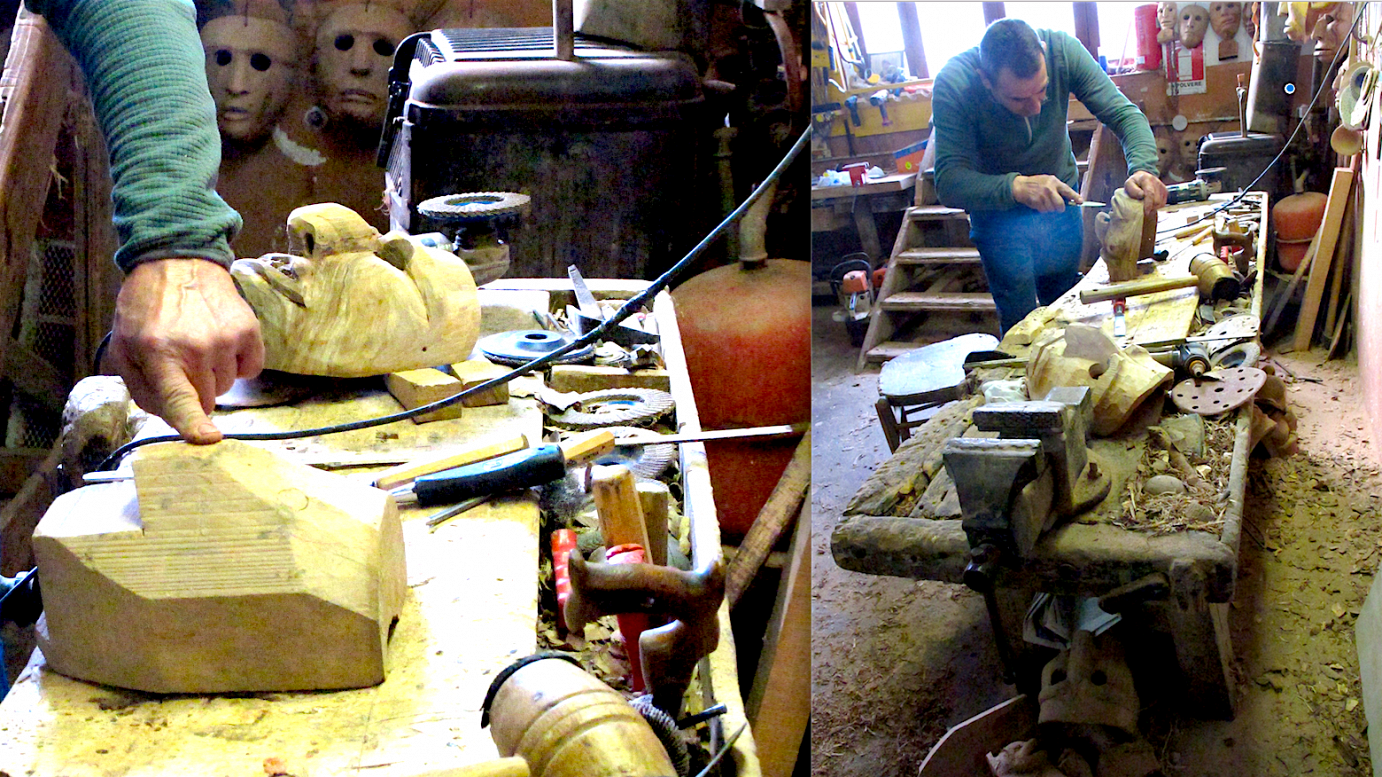
To create a mask, Ruggero takes a rough trunk of wood and starts carving it briskly into shape with a chisel and a hammer. Masks come in a variety of woods, light alder, heavier walnut or oak, for instance.
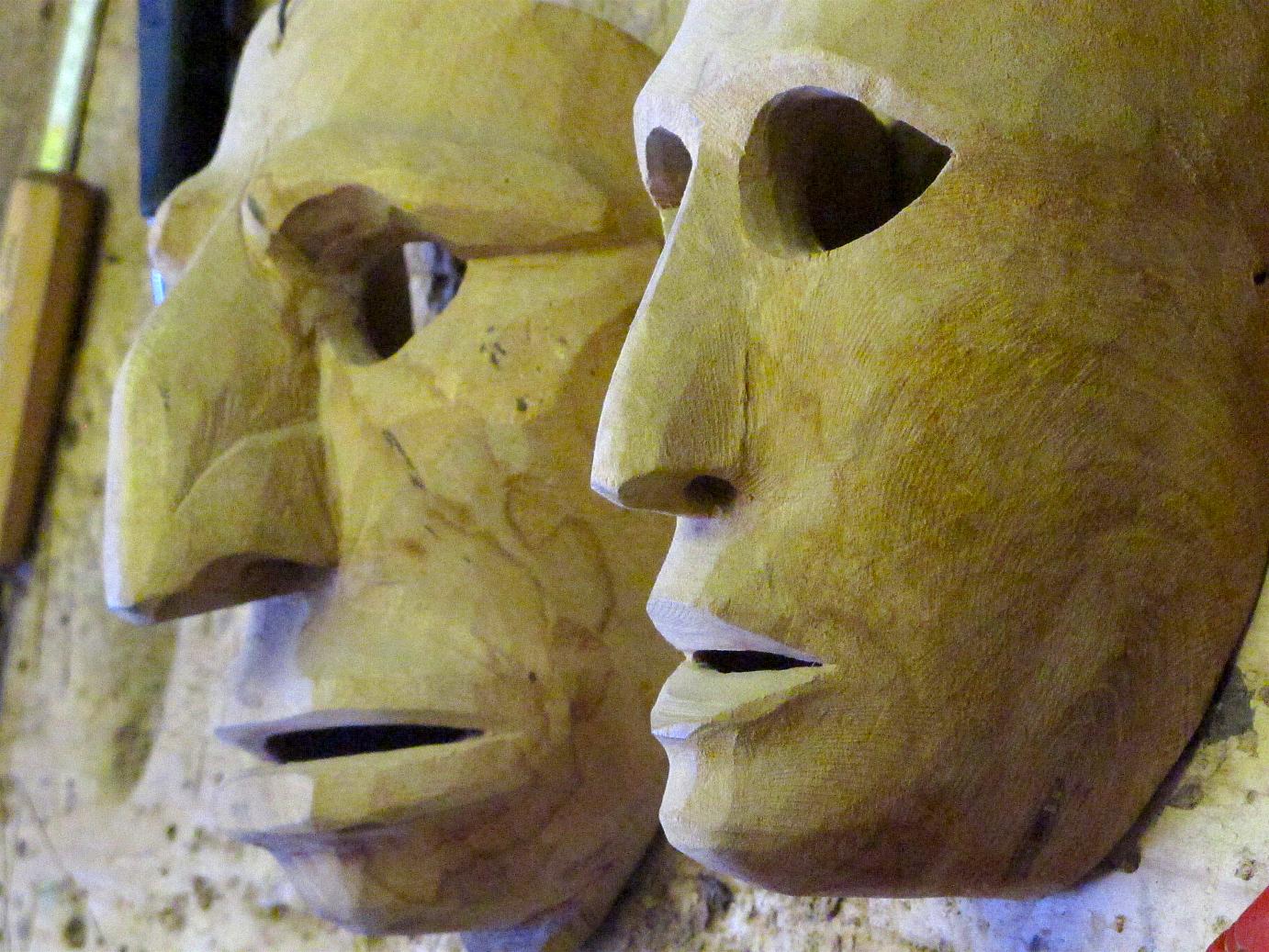
Maschera brutta – maschera bella: Ugly for the bad (Mamuthones), beautiful for the good (Issohadores).
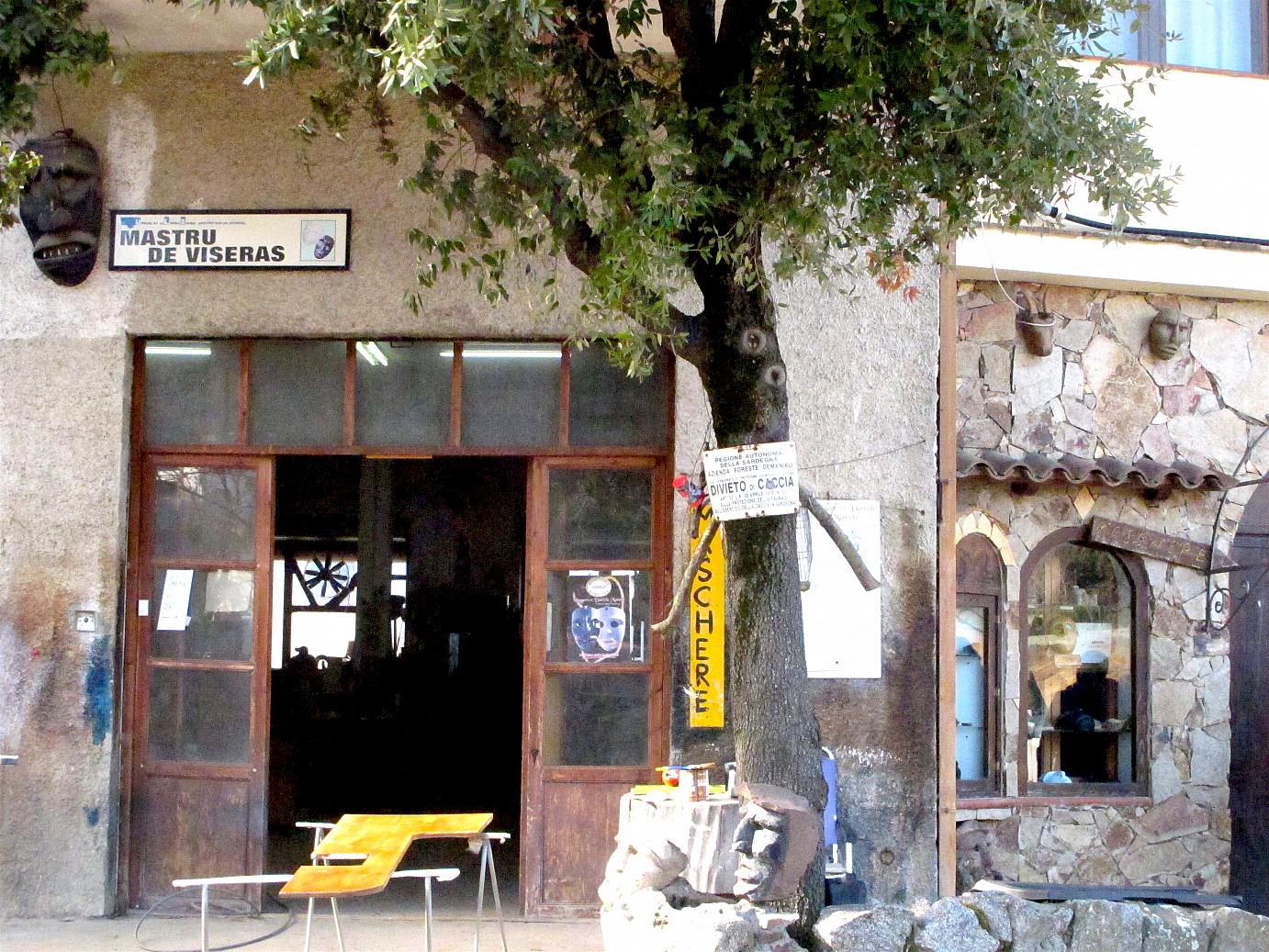
The entrance to Ruggero Mameli’s workshop in Mamoiada. http://www.mascheremameli.com/
For those eager to delve deeper into the history of masks in this region (and the Mediterranean), a visit to the Museo Maschere Mediterranee is well worth their while. Especially the congenially dramatic movie shown on-site has a lasting impact on its visitors by shedding light onto the myth that enshrouds this century-old tradition. www.museodellemaschere.it
Stomach grumbling?
‘Sa Rosada’, a rustic, vaulted-ceilinged restaurant a few steps away from the museum, serves regional delicacies. Just to name a few: Porcheddu (suckling pig), Malloreddus (Gnocchi made from flour), cooked lamb, lardo, cheeses produced from sheep’s milk like the hearty Pecorino or Pane Carasau, the crisp, wafer-thin pita bread. And should you be craving regional white wine: Vermentino di Galluro is the sort of wine produced here in the northern part of Sardinia.
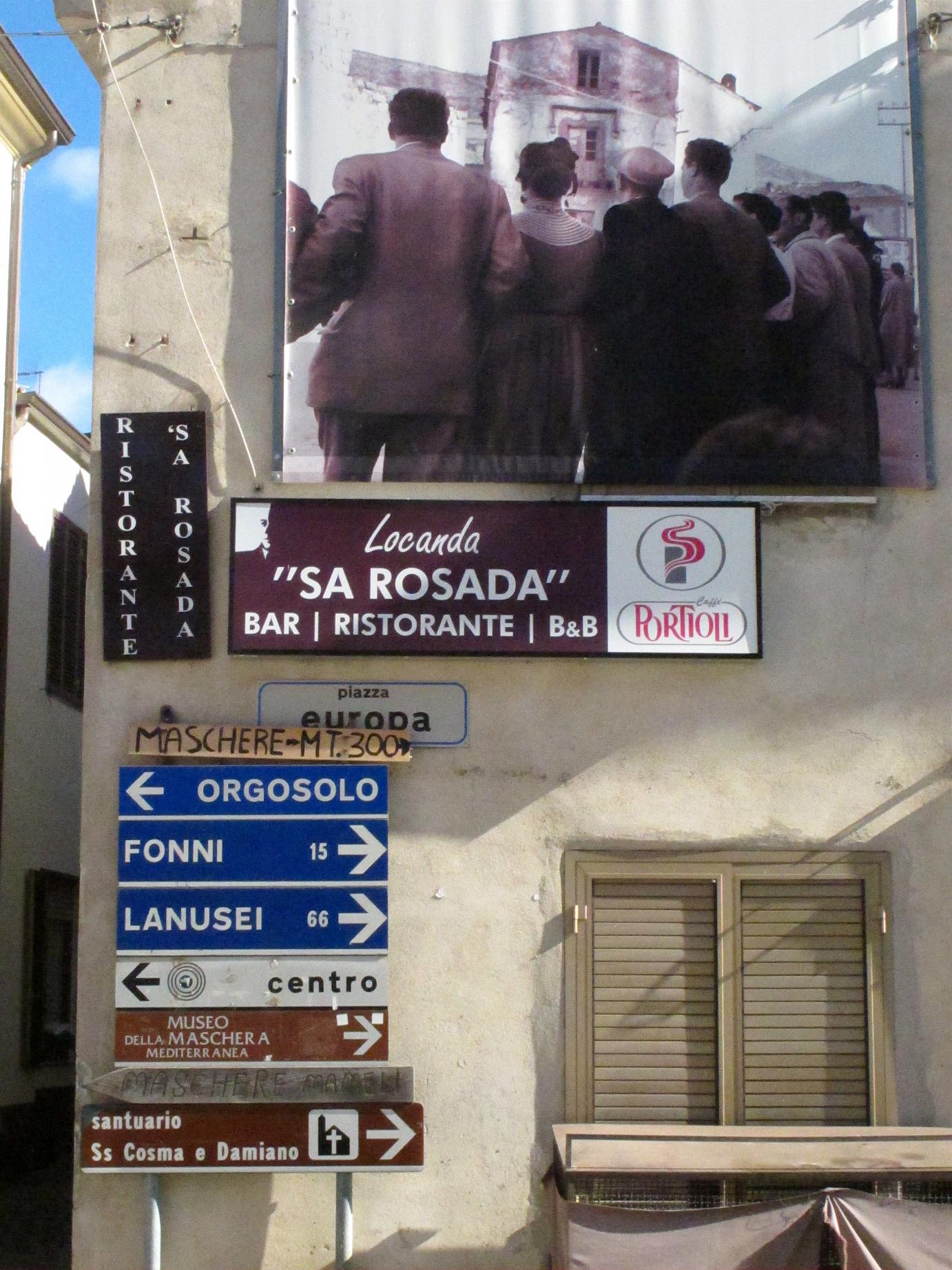
Many roads lead to Mamoiada.
Mamoiada, nestling in the hilly region of Barbagia di Ollolai, is a village of 2,500 situated 18 kms south of Nuoro.
Via an expressway, the 100 kms from Olbia to Nuoro can be conveniently covered by car within approx. 1 ½ hours.
Closest airport: Olbia. Olbia also offers a hotel scape of many denominations.
https://www.sardegnaturismo.it/en/explore/mamoiada
Header image: Credit: Mamuthone Mask. Enrico Spanu/www.enricospanu.com. License: CC BY-NC-SA.
Image Issohadore: Credit: Maddanu M.. License: CC BY-NC-SA.
All other images ©Christina Feyerke
